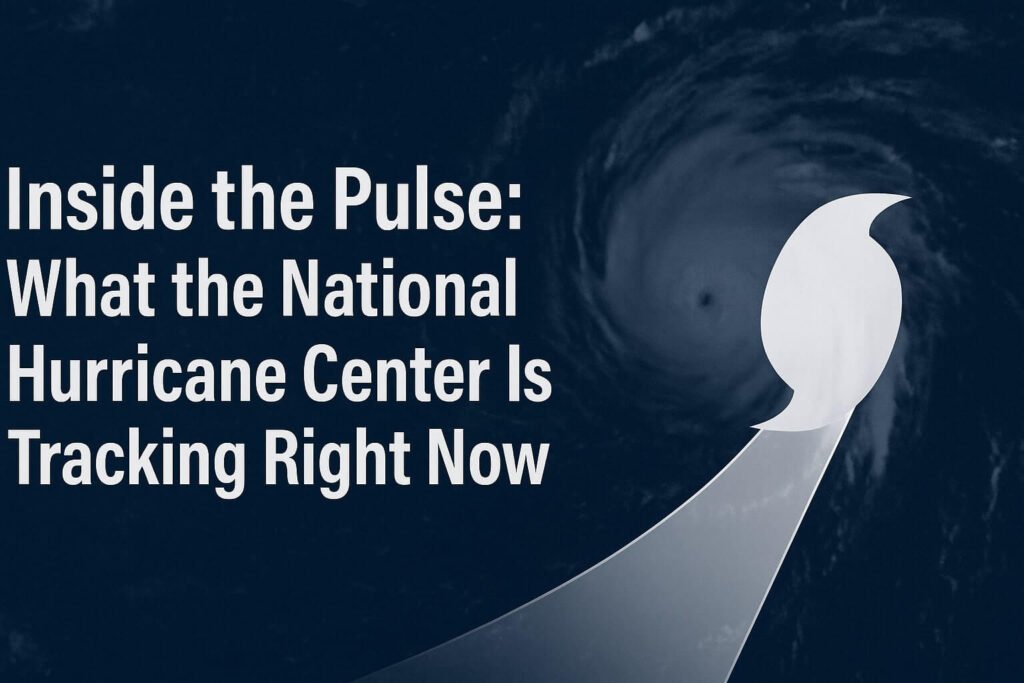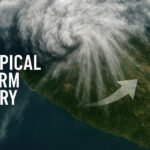As the Fourth of July holiday draws near, coastal residents and weather watchers alike are turning their attention to the National Hurricane Center. And for good reason. Even though no active hurricanes are currently threatening the United States, there’s a quiet storm of activity behind the scenes: early-season systems, new forecasting tools, and a few brewing concerns in the Gulf and off the Southeast coast. It’s a calm surface with ripples of change beneath.
Let’s take a look at what’s happening right now, what could happen next, and how the National Hurricane Center is gearing up to keep us all one step ahead this season.
The Tropics Today: Barry’s Exit, Flossie’s Rise, and a Sneaky Florida Setup
Tropical Storm Barry had a brief but soggy life. Over the weekend, it swirled together in the Bay of Campeche, made landfall in Mexico near Veracruz, and quickly began to unravel. But while the storm is technically gone, its impact isn’t. Heavy rain continues to soak parts of eastern Mexico, with totals reaching up to 8 inches in some spots. Flash flooding and mudslides are still possible, especially in San Luis Potosí and Tamaulipas. The National Hurricane Center issued its final advisory Monday morning, but regional authorities remain on alert as swollen rivers crest and local rescue teams stay on call.
In the eastern Pacific, Tropical Storm Flossie is ramping up. It’s spinning several hundred miles off the Mexican coast and soaking up warm waters like fuel. Forecast models suggest a potential hurricane status by midweek, though the storm is expected to stay offshore. Still, the threat of rip currents and high surf will stretch from Manzanillo to Cabo, especially as the storm deepens.
Closer to the U.S., a different kind of threat is forming. A weak frontal boundary is stalling out over the Southeast and could fizzle into a pocket of low pressure just offshore Florida or over the peninsula itself. The National Hurricane Center has flagged this setup with a 20 percent chance of development over the next seven days. While that doesn’t sound like much, it’s enough to disrupt travel plans. If it spins up, it could bring tropical downpours, road-clogging squalls, and thunder to Florida, Georgia, and the Carolinas between Friday and Sunday. Holiday travel could get complicated.
What’s New at the National Hurricane Center This Season
Behind every forecast graphic and breaking alert, there’s a skilled team at the National Hurricane Center working shifts around the clock in Miami. These scientists, meteorologists, and technical experts blend satellite data, ocean buoys, radar scans, hurricane-hunter flights, and computer models to produce the forecasts we rely on.
For 2025, the National Hurricane Center has rolled out a few meaningful changes. First, their iconic Tropical Weather Outlook maps now span seven days instead of five. That gives people in the potential path of a storm more time to prepare. It’s a small tweak with big planning power.
They’ve also revamped their hazard tables. Instead of walls of text, they now use clean, color-coded bars that summarize wind, rainfall, and storm surge risks in one glance. It’s faster to absorb, easier to share, and more useful during a stressful moment.
Cone graphics, the ones that show the likely path of a storm, have gotten sharper too. Thanks to better data and higher-resolution satellite tools, the National Hurricane Center can now draw those tracks with more precision. That means narrower evacuation zones and more targeted warnings.
And there’s a change in timing too. While the classic advisories still drop at 2 a.m., 8 a.m., 2 p.m., and 8 p.m. Eastern, the Center can now release special advisories any time a threat emerges, even if it’s between scheduled updates. That flexibility is especially helpful during sudden developments, like a thunderstorm cluster that rapidly spins into a tropical depression near land.
At the heart of it all is a mission to cut the jargon, reach more people, and make forecasts easier to act on. Whether you’re a homeowner in Florida, a mariner in the Gulf, or a traveler with a flight delay in Charlotte, the National Hurricane Center is quietly shaping your choices.
Looking Ahead: What to Watch This Week
So what’s next? Barry’s leftovers will soon dissipate over Mexico, but the rain may keep falling into Tuesday. The disturbance near Florida is the real wild card. Even if it doesn’t develop into a tropical depression or storm, the moisture and instability it brings could affect millions of holiday travelers.
Expect afternoon downpours, some localized flooding, and plenty of lightning across Florida, coastal Georgia, and the Carolinas from Thursday through Sunday. If you’re planning beach trips, outdoor fireworks, or long road drives, now’s a good time to build in weather buffers.
In the eastern Pacific, all eyes remain on Flossie. Even if it stays offshore, its growing size and intensity will affect marine operations and surf conditions. Cargo ships, cruise lines, and fishermen are already adjusting routes.
Meanwhile, the Atlantic remains quiet farther east. Saharan dust and dry air are keeping the tropics stable for now, but forecasters know that things can flip quickly in July. The Atlantic hurricane season typically kicks into gear in mid-July when sea surface temperatures spike and atmospheric waves roll off Africa.
The National Hurricane Center is already tracking subtle signs. A weak tropical wave over the western Caribbean may try to regroup later in the week near the Yucatán or Bay of Campeche. It’s not an immediate concern, but it’s something to watch.
The big takeaway? Just because things seem quiet doesn’t mean you can tune out. The National Hurricane Center is built for moments exactly like this—when one system ends, another begins to stir, and a whole lot of travel is about to meet a whole lot of weather.
Check their 8 a.m. and 8 p.m. Tropical Weather Outlooks, bookmark nhc.noaa.gov, and follow CycloneRadar for daily updates that make sense of the science. The tropics are unpredictable, but staying informed is one thing you can control.


